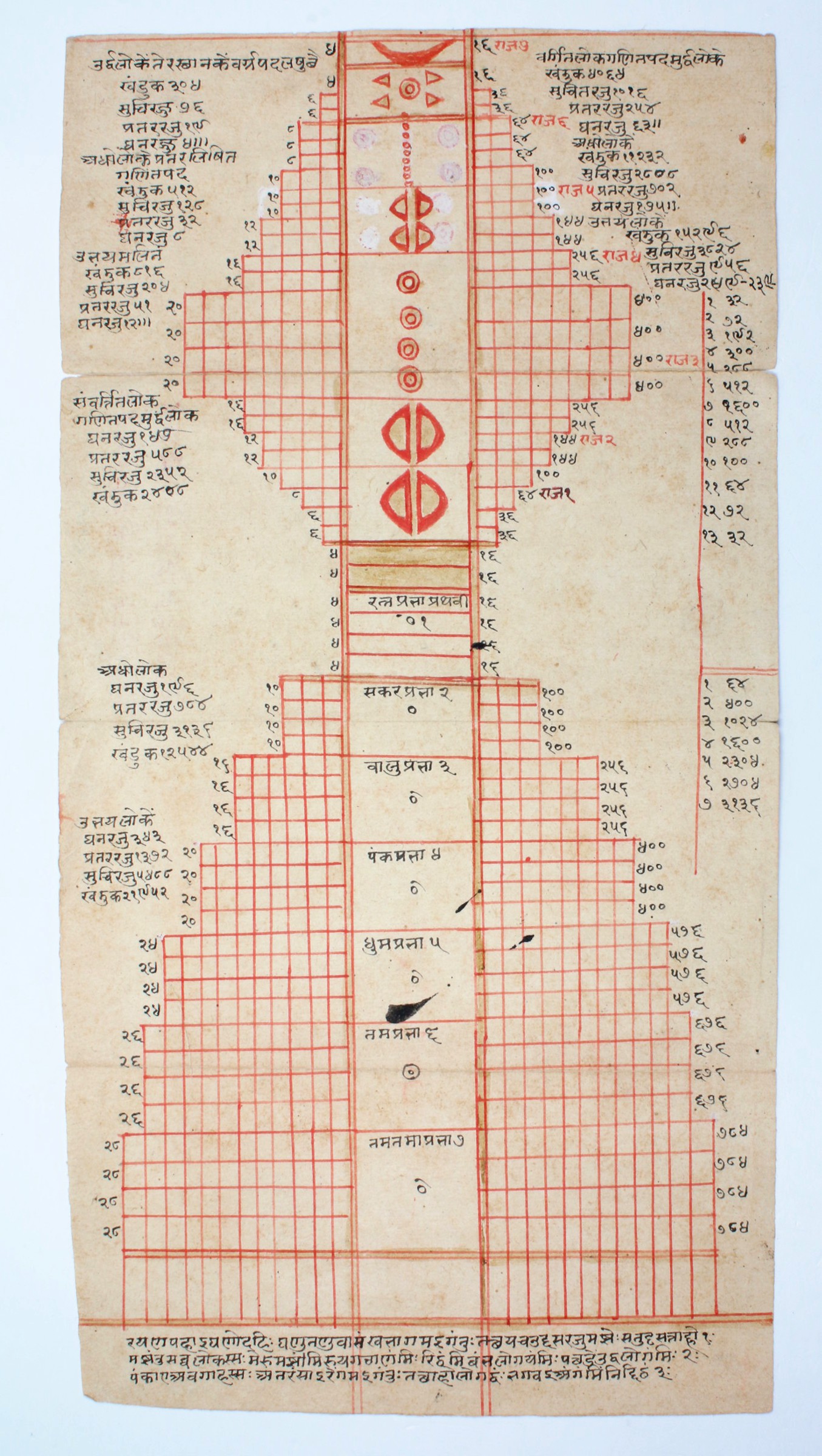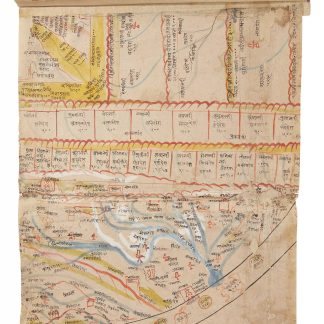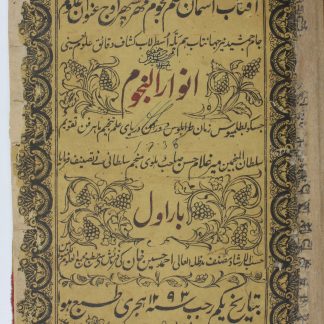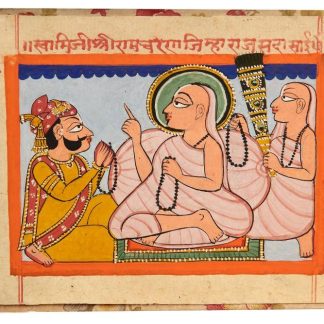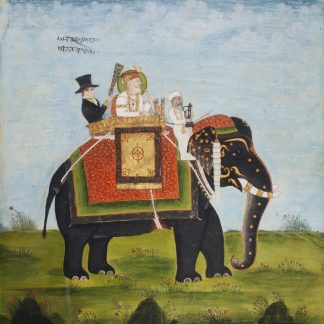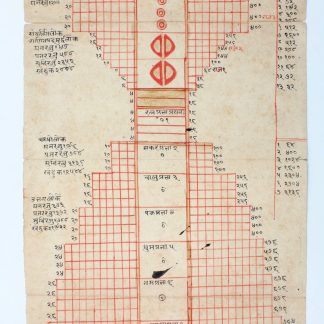Diagramming the Jain cosmos
[Jain cosmographical diagram].
1 leaf, with only a short text on the reverse. 441 x 225 mm. Painting and manuscript on paper in red, yellow, and black ink.
€ 750.00
A distinctive vision of the cosmos: this intricate red and yellow diagram is immediately recognizable as carefully hand-painted depiction of the Jain universe. Shaped like a human being whose silhouette takes roughly the form of an hourglass, the visual, human element of the Jain cosmos is melded beautifully here with its mathematical detail. Every depiction of the Jain cosmos adheres to a basic structure: the heavenly and hellish realms above and below, with the middle world and Mount Meru at the centre of it all. In this case, the 'cosmic man' is simply implied by the geometric forms of the diagram, present but not realized. The viewer's attention is instead drawn to the mathematical underpinnings of the cosmos, with its dimensions carefully noted along the sides of the figure. Jainism's interest in mapping the universe and the space of the world itself resulted in some of the most interesting mathematical leaps forward in the history of science, including one of the earliest uses of the number zero (the possibility of which was dismissed by the Ancient Greeks and only later adopted by the Tang Chinese) in the Lokavibhaga, the main Jain cosmological text. Few faiths have such a distinct artistic culture around depictions of the cosmos, or as thorough a system for calculating the exact size and volume of the universe. Both aspects are demonstrated here.
From a Northern German private collection, assembled mainly in India from the early 1950s to the 1980s.
With folding creases, one large tear to a fold, otherwise in good condition, bright and clean.

